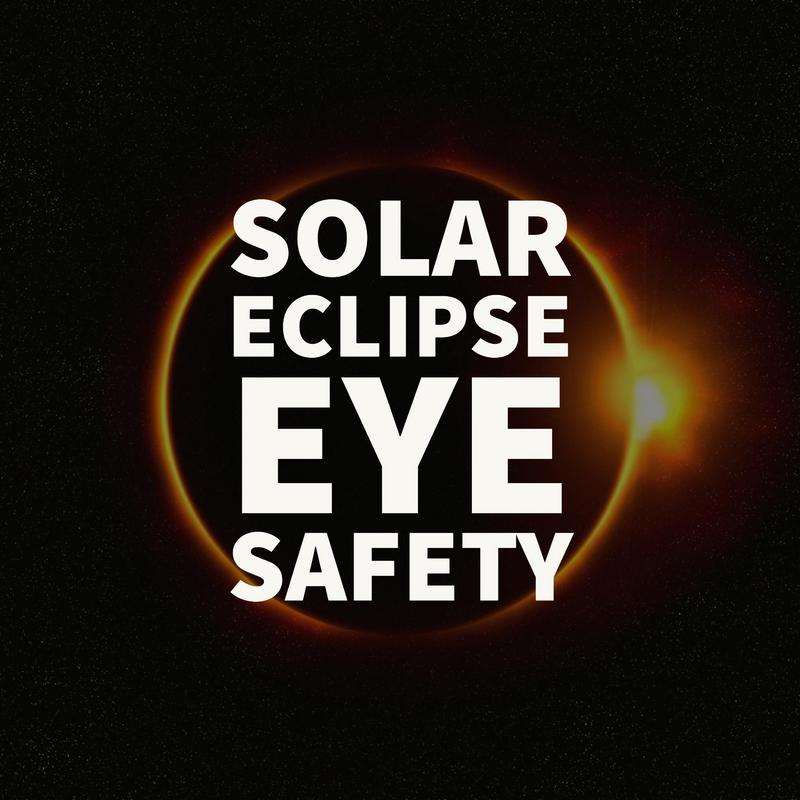Solar Eclipse Eye Safety
Looking forward to the next solar eclipse? On August 21, 2017, a little over a month away, a solar eclipse will be visible in North America. The entire continent will experience a partial eclipse for a period of anywhere from 2-3 hours. During this time, the moon will completely cover the sun for roughly a two minute period.
Planning on viewing the eclipse? Great! The next solar eclipse will not occur for another 2 years, so this is a great opportunity to do so! However, there are special precautions that must be taken when viewing an eclipse, as looking directly at the sun (even just the edges) can seriously damage your eyes.
In order to view the solar eclipse, you must use special solar filters, which can often be found in special glasses or solar viewers that are often handheld. These filters must meet a standard known as ISO 12312-2. It is important to note that ordinary glasses, even very dark ones, are not adequate for protecting your eyes from the sun!
Here are some great steps to safely enjoy an Eclipse, from the American Academy of Ophthalmology:
- Carefully look at your solar filter or eclipse glasses before using them. If you see any scratches or damage, do not use them.
- Always read and follow all directions that come with the solar filter or eclipse glasses. Help children to be sure they use handheld solar viewers and eclipse glasses correctly.
- Before looking up at the bright sun, stand still and cover your eyes with your eclipse glasses or solar viewer. After glancing at the sun, turn away and remove your filter—do not remove it while looking at the sun.
- According to the American Academy of Ophthalmology, the only time you can look at the sun without a solar viewer is during a total eclipse. When the moon completely covers the sun’s bright face, and it suddenly gets dark, you can remove your solar filter to watch this unique experience. Then, as soon as the bright sun begins to reappear very slightly, immediately use your solar viewer again to watch the remaining partial phase of the eclipse. We still recommend not removing your lenses/glasses unless you are 100% sure it is a total eclipse when doing so.
- Never look at the uneclipsed or partially eclipsed sun through an unfiltered camera, telescope, binoculars, or other similar devices. This is important even if you are wearing eclipse glasses or holding a solar viewer at the same time. The intense solar rays coming through these devices will damage the solar filter and your eyes.
- Talk with an expert astronomer if you want to use a special solar filter with a camera, a telescope, binoculars, or any other optical device.
We recommend reading this article by the American Astronomical Society for more information on eyewear and handled viewers you can use in order to safely view the Eclipse. The American Academy of Ophthalmology recommends eclipse glasses manufactured by the following four companies:

